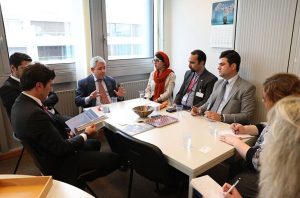In 2017, global demand for intellectual property (IP) rights hit a record high, led by China in patents, trademarks, and industrial designs. However, Latin America showed stagnation, reflecting weak protection for local innovators.
According to the World Intellectual Property Organization (WIPO), the world received 3.17 million patent applications in 2017, 65.1% of which came from Asia. Meanwhile, Latin America, the Caribbean, Oceania, and Africa combined represented only 3.4%.
In 2007, Latin America filed 58,100 patent applications, but by 2017, this number dropped to 57,600. WIPO’s patent division director, Marco Alemán, pointed out that Latin American countries invest less than 0.5% of their GDP in innovation and lack solid policies to foster R&D.

Slow Processes and Low Local Involvement
While other regions have surged, Latin America lags due to slow bureaucratic processes. In Brazil, securing a patent takes about 8 years, compared to 22 months in Europe and only 9 months in Russia. Of the 25,000 patent applications Brazil received in 2017, 80% came from foreign applicants, with only 700 patents granted to local innovators.
In Mexico, the process takes three years, and 52.8% of non-resident applications are submitted by U.S. entities, reflecting how foreign companies seek IP protection in regional markets.
Innovation Barriers and Education Gaps
The lack of investment in R&D and private-sector involvement creates further challenges for innovation. Economic and political instability also discourages research efforts. “Innovation becomes harder without state support and private incentives,” explains María José Cordero, an intellectual property lawyer.
Brazil, Mexico, and Argentina account for nearly 90% of Latin America’s scientific output, but these countries have reduced their R&D investments over the last decade.
Pablo Jenkins, a leader at the World Economic Forum, argues that Latin America’s educational system fails to foster creativity and experimentation, crucial skills for innovation. “Our schools follow outdated models, and without early exposure to creative learning, it’s hard to build the skills needed to innovate as adults,” he says.
The region’s slow patent processes, weak IP policies, and insufficient educational reforms hinder progress. Without major changes, Latin America’s innovators will continue to face an uphill battle.
